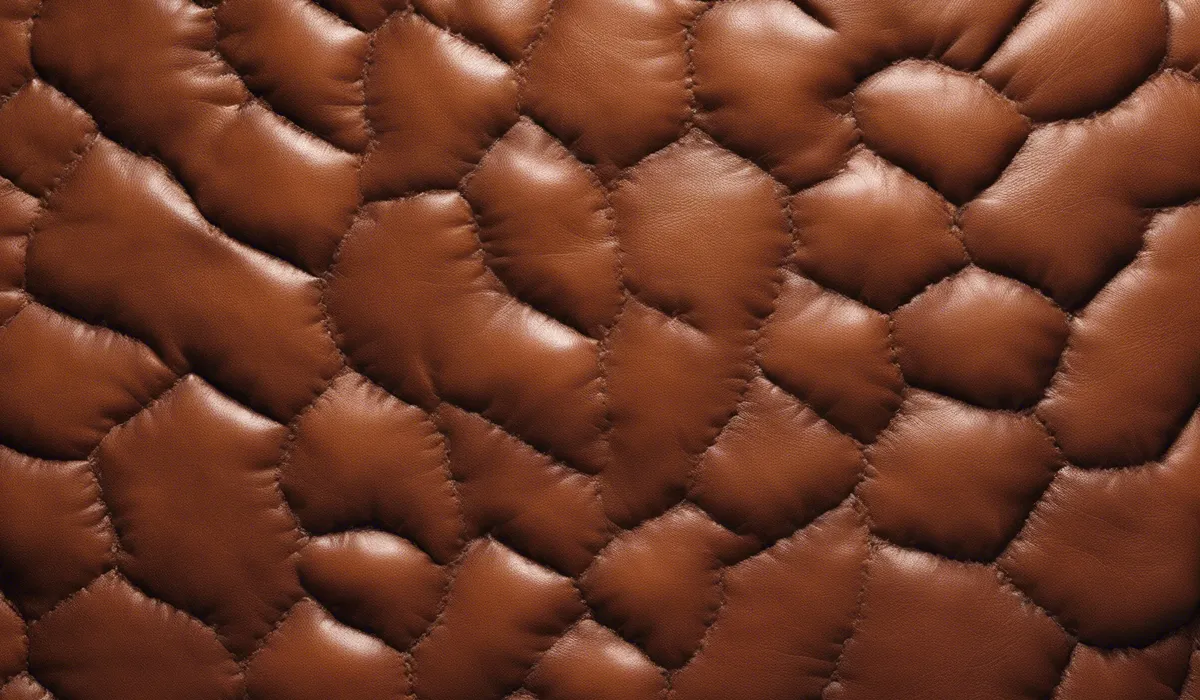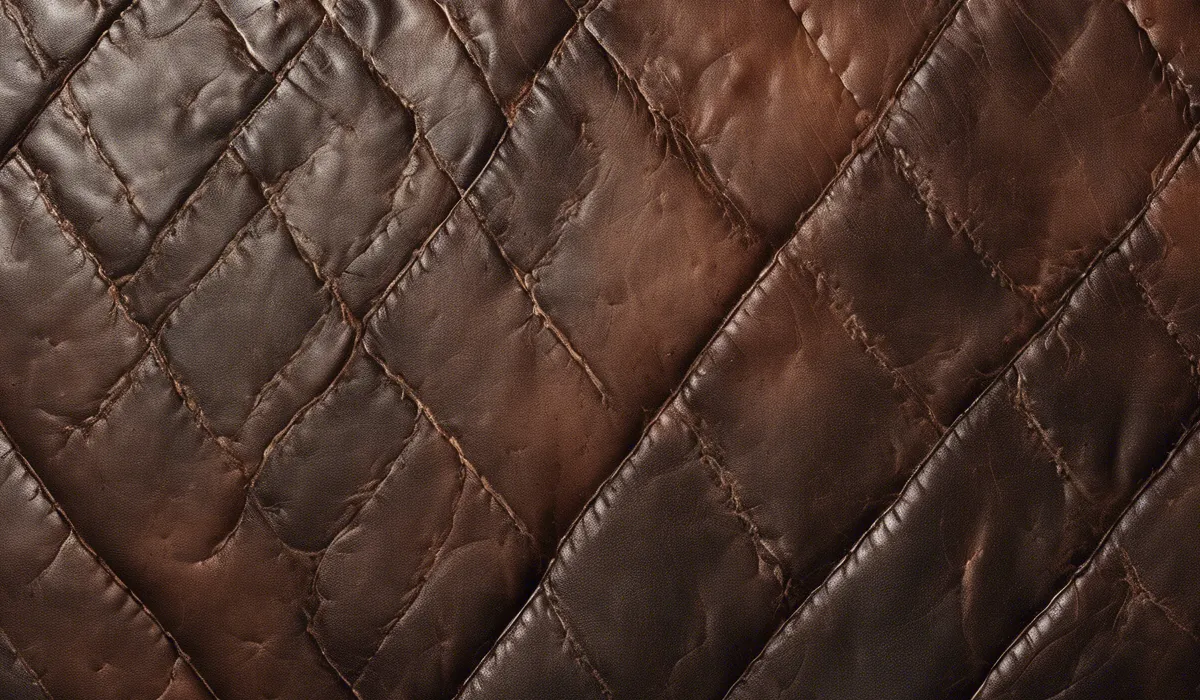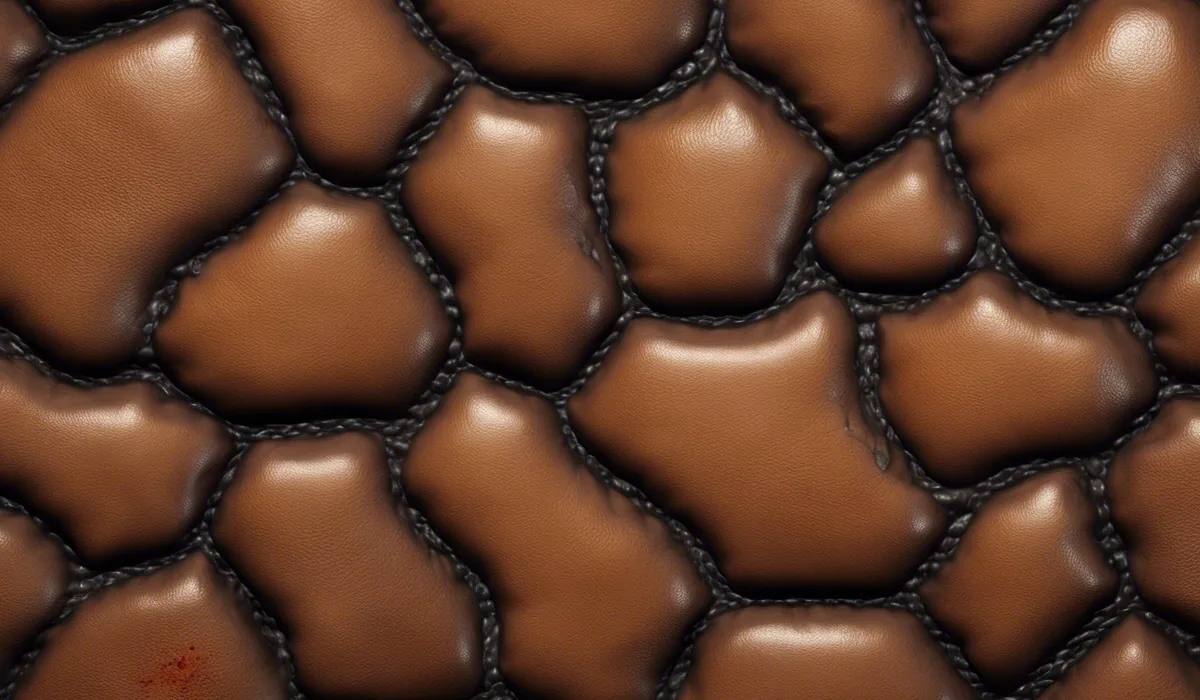Mold on leather is not inherently dangerous to touch, but it can cause allergic reactions or respiratory issues in sensitive individuals. It’s important to clean mold off leather promptly to prevent damage to the material and potential health risks.
Understanding Mold on Leather

Definition of Mold: Types and Characteristics
Mold is a type of fungus that can grow in various environments. It appears in multiple colors like green, black, white, or even blue.
The most common types found on leather are Aspergillus, Penicillium, and Cladosporium. Mold thrives in moist, warm, and dark conditions, and it reproduces through tiny spores that travel through the air.
When it lands on leather, it can start to grow if the conditions are right.
Causes of Mold Growth on Leather
Leather can develop mold when it’s left in an environment that’s too damp or when it’s not dried properly after getting wet.
Lack of ventilation and exposure to darkness can also encourage mold to grow. If leather items are stored away without being cleaned, they can become a breeding ground for mold.
Conditions that Promote Mold Spores to Thrive on Leather Items
Mold spores are looking for the perfect place to call home. They need moisture, a food source, which in this case is the leather, and a lack of airflow to thrive. Humidity levels above 60% are especially conducive to mold growth.
Leather items that are stored in basements, closets, or other areas that aren’t well-ventilated are at risk.
Common Leather Items Susceptible to Mold
Any leather item can fall victim to mold, but items like jackets, shoes, bags, and furniture are particularly vulnerable.
These items are often used and stored in ways that expose them to moisture and then tucked away in dark closets or rooms, making them prime targets for mold growth.
Health Risks Associated with Mold on Leather

Overview of Health Concerns Related to Mold Exposure
Exposure to mold can lead to health problems, especially for individuals with allergies, asthma, or weakened immune systems.
Mold can cause symptoms like sneezing, coughing, watery eyes, and skin irritation. For people with serious mold allergies or chronic lung conditions, the effects can be more severe.
Specific Risks of Mold Exposure from Leather Goods
When mold grows on leather goods, it poses a risk because these items come into close contact with our skin and are often used in our daily lives.
Handling moldy leather can lead to direct skin contact with mold spores, which can cause irritation and allergic reactions for some people.
Vulnerable Populations and Potential Health Effects
Children, the elderly, and those with respiratory conditions or compromised immune systems are particularly vulnerable to the effects of mold.
For these groups, mold can trigger asthma attacks, lead to respiratory infections, and cause more serious health issues over time.
Importance of Handling Mold on Leather Properly to Minimize Health Risks
It’s crucial to deal with mold on leather promptly and correctly. By taking the right steps to clean and prevent mold, you can protect your health and the lifespan of your leather goods.
This includes wearing protective gear during cleaning and ensuring all mold is thoroughly removed.
Prevention and Remediation of Mold on Leather

Tips for Preventing Mold Growth on Leather
Preventing mold begins with keeping leather dry and clean. Use a soft, dry cloth to wipe down leather items regularly.
Store them in well-ventilated areas, and consider using dehumidifiers or silica gel packs to keep humidity levels down. Always dry leather thoroughly before storage if it gets wet.
Cleaning Techniques for Moldy Leather Items
If you find mold on your leather, don’t panic. Start by taking the item outside to avoid spreading spores indoors.
Use a soft brush to remove surface mold, then clean the area with a mixture of water and mild soap. For stubborn mold, a solution of water and vinegar can help. After cleaning, let the leather dry completely in a well-ventilated area.
Professional Mold Removal and When to Seek Help
Sometimes mold on leather is too much for you to handle alone. If an item is very valuable or the mold infestation is severe, it’s best to call in professionals.
They have the tools and expertise to remove mold safely and effectively, ensuring that your leather goods and health are not at risk.
Maintenance and Care of Leather to Prevent Future Mold Issues
Regular maintenance is key to preventing mold on leather. Condition your leather items periodically to keep them supple and resistant to moisture.
Store them in breathable bags or containers, and avoid plastic bags that trap moisture. Keep a close eye on items in storage and check them regularly for signs of mold.
FAQs About Mold on Leather
Is touching mold on leather harmful?
Touching mold on leather is not inherently dangerous for most people, but it can cause allergic reactions or respiratory issues for those who are sensitive.
Can mold on leather cause health problems?
Yes, mold on leather can potentially cause health problems such as allergic reactions or respiratory issues in individuals who are sensitive or allergic to mold.
Should I clean mold off leather immediately?
Yes, it’s important to clean mold off leather promptly to prevent damage to the material and mitigate potential health risks.
What are the risks of leaving mold untreated on leather items?
Leaving mold untreated on leather can lead to permanent damage to the material and may increase the risk of health issues for sensitive individuals.
How can I safely remove mold from leather?
To safely remove mold from leather, it’s recommended to use a mild detergent mixed with water, gently wipe the affected area, and allow it to dry completely in a well-ventilated space.
Final Thoughts
Touching mold on leather typically poses no severe danger, but it can provoke allergic reactions or respiratory issues among those with sensitivities.
Prompt removal of mold is crucial, as it safeguards the leather from damage and mitigates health risks. Proper cleaning ensures the longevity of leather items and maintains a safe environment.
